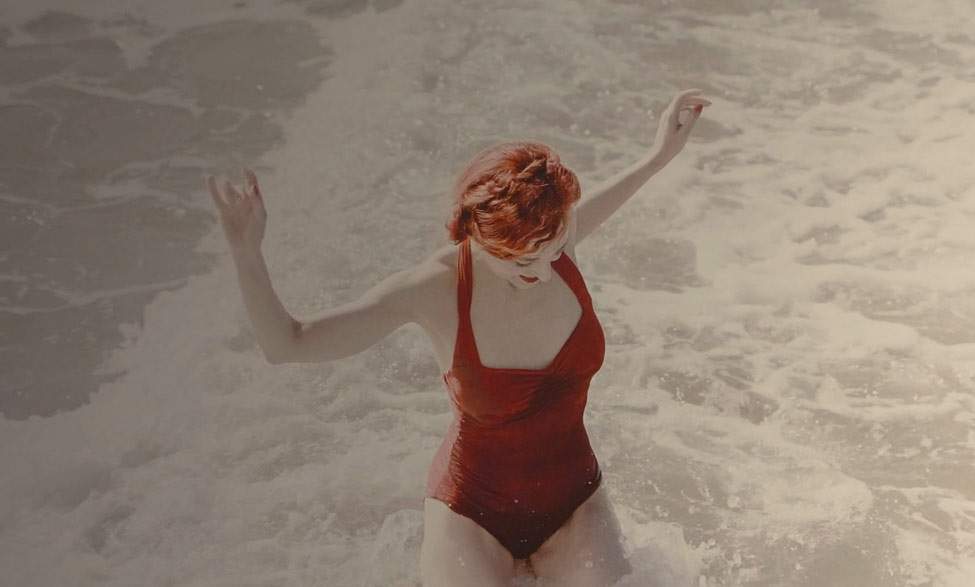On Art Night tonight, the photography of Rock'n'Roll and Giacomo Balla.
Tonight, Friday, December 17, at 9:15 p.m. on Rai 5, Art Night features two documentaries in which movement is at the heart of the narrative. Movement has always been the most difficult experience for art to narrate, and the great challenge of artists who stop in their work an instant, but also wish to represent its evolution. And so Neri Marcorè, host of Art Night, will move between the photographers who witnessed the Summer Jamboree (International Festival of Music and Culture of America in the 1940s and 1950s), and Giacomo Balla, a painter who, following the futurist momentum, tried to represent movement, speed, and the succession of instants.
The first of the two documentaries to be aired is Rock’n’Roll is a State of the Soul, which will be premiered: it is the documentary co-produced by the Summer Jamboree together with “Senigallia City of Photography,” the result of the exhibition of the same name conceived and produced for the 20th anniversary of the Festival in 2019. The Rock’n’Roll is a State of the Soul exhibition is a photographic and multimedia narrative spread across twenty exhibition rooms, including art photos, retro costume and streetstyle photos, Rock’n’Roll icons, life-size portraits, immersive rooms, scenic set-ups and the maxi installation of the Burlesque Show Hologram (staged by Eve La Plume), a Wall of Wonder of dimensions never seen before in Italy until then.
The documentary is dedicated to photography connected to the Rock’n’Roll world and culture, and features interviews with some of the photographers who participated in the exhibition (Guido Calamosca, Giuliano Guarnieri, Amedeo M. Turello, Graziano Panfili, Giovanni Cocco, Pippo Onorati) and the participation of Claudio “Greg” Gregori, Jackson Sloan and Peter Ford, who opened the show. (Peter, the son of Hollywood star Glenn Ford, bought the vinyl of Bill Haley & His Comets Rock Around the Clock when he was only 10 years old and gave it to his father, thus making it part of the opening soundtrack of the film Blackboard Jungle, becoming a disruptive worldwide hit and actually triggering a real “revolution.”) “At the time,” says Renzo Arbore, “everyone thought it was just a fad, I instead understood that Rock and Roll was on its way to becoming an era.”
Direction and editing are by Sergio Canneto and Alessandro Piccinini. Assistant director Cesare Barbieri. General organization Cecilia Guagnano. Camera operators: Sergio Canneto, Cesare Barbieri, Giacomo Manghi, Andrea Marchi, Eva Castellucci, Michael Petrolini, Teo Rinaldi. Stabilizer Mattia Zamagni. Live take Alberto Marras. Audio mix Michele Conti. Color correction Tobia Montanari. Photographers interviewed: Giovanni Cocco (Sulmona - Le Monde, Newsweek, National, Geographic), Pippo Onorati (Rome photographer, designer, director, journalist, former collaborator of Oliviero Toscani in Benetton, for Fabrica and Colors), Amedeo Turello (Montecarlo Fashion photographer and celebrity portraitist, collector and curator of important exhibitions of the most great international photographers who have celebrated fashion and beauty), Guido Calamosca (photographer from Senigallia who lives and works in Bologna. Engaged in the Summer Jamboree photographic project for over seven years in which he has captured unique and unrepeatable shots), Graziano Panfili (Rome - exhibits in museums and galleries in different countries around the world, established in prestigious national and international competitions, director of photography for film productions is one of the founders of the photographic collective Ulixes Pictures), Giuliano Guarnieri (Verona - his path to the origins led him from the modern SLR to the more antiquated Rolleiflex and the view camera).
Art Night continues with Balla, the Lord of Light an Arte.it Originals production made in collaboration with Rai Cultura, directed by Franco Rado, authors Eleonora Zamparutti and Piero Muscarà. This is an original documentary that recounts the life of one of the leading exponents of Futurism, a protagonist of the avant-garde art scene in Rome before, during and after Fascism.
Mural paintings that Giacomo Balla had created for Bal Tik-tak, the cabaret that enlivened Roman nights in the early 1920s, have recently come to light. The discovery adds to the forthcoming unveiling of the artist’s private archive, found in his recently restored home on Rome’s Via Oslavia. 2021 will mark the 150th anniversary of the birth of Giacomo Balla, the futurist genius who was the beacon of the most powerful avant-garde of the early 20th century. Yet shadowy areas, like indelible stains, obscure his human and artistic story. Giacomo Balla the fascist. Giacomo Balla the traitor. Balla the provincial. A complex, sometimes secretive figure of multifaceted creativity, the artist has long been the victim of a stigma of infamy. Today new studies restore Balla to a leading role in the international art scene, so much so that he has been recognized as the “Leonardo da Vinci of the 20th century,” as he liked to call himself. Having fallen out of favor after the years of association with the Regime and the Duce, Giacomo Balla magically rose again in the postwar period. Thanks to large American Jewish families of collectors interested in buying Futurist canvases. And thanks also to the young artists of the Italian neo-avant-gardes who in the 1950s recognized Balla as the spiritual father of Italian abstractionism.
Art Night is a program by Silvia De Felice and Emanuela Avallone, Massimo Favia, Alessandro Rossi, directed by Andrea Montemaggiori.
Pictured: a snippet from Rock’n’Roll is a State of the Soul.
 |
| On Art Night tonight, the photography of Rock'n'Roll and Giacomo Balla. |
Warning: the translation into English of the original Italian article was created using automatic tools. We undertake to review all articles, but we do not guarantee the total absence of inaccuracies in the translation due to the program. You can find the original by clicking on the ITA button. If you find any mistake,please contact us.




























